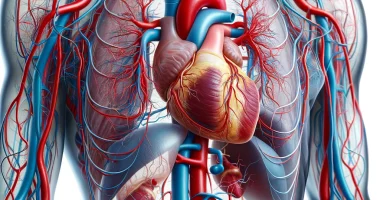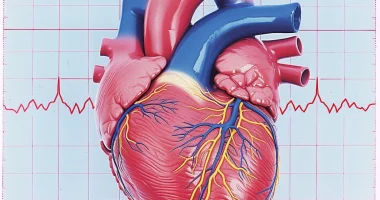Back pain
Introduction
One in ten people experience back pain. This condition reduces one’s ability to work and severely limits life activity. In some cases, back pain can be a symptom of a severe disease, the treatment of which is most effective at early diagnosis. It is essential to contact a doctor quickly. The specialist will establish an objective diagnosis and make a treatment and rehabilitation scheme.
Back pain can be a symptom of diseases of the spine, muscle tissue, subcutaneous tissue, kidneys, pancreas, etc. The list of possible diagnoses is very long.
Diagnosis of back pain
Examination of a patient with complaints of back pain begins with the collection of complaints and anamnesis. The doctor needs to know the type, duration, and intensity of sensations, their relationship to movement, their reaction to medications, and concomitant symptoms. Information about previous diseases, injuries, operations, and chronic pathologies is also essential. After the conversation, the doctor conducts a general (assessment of the physique, posture, temperature, respiratory and heart rate, etc.) and a specialized examination (neurological, orthopedic, etc.). At this stage, a preliminary diagnosis is made. The person is sent for laboratory and instrumental examination to confirm or clarify it.
- Radiography of the spinal column allows the detection of damage, congenital and acquired deformities, narrowing of natural orifices, signs of osteochondrosis, and intervertebral hernias.
- Urography. A method of investigation of X-ray examination of the urinary system with preliminary contrast. It allows the detection of concrements, areas of narrowing and dilation, etc.
- CT scans and MRIs of the spine are also used for imaging, but they provide a clearer image in the form of layer-by-layer slices that show not only bone but also intermediate-density tissue.
- Ultrasound of the kidneys and urinary tract, abdominal organs, and heart allows you to assess the condition of tissues and blood circulation in them, identify stones, areas of inflammation, damage, necrosis, etc.
- Electroneuromyography, electromyography. It is necessary to assess the condition of muscles and nerve fibers.
- Laboratory diagnostics include general blood and urine analysis, blood biochemistry, infection tests, etc. They allow you to assess the body’s condition, identify inflammatory or malignant processes, detect an infectious agent, study the state of the kidneys, etc.
- ECG. It is prescribed when a cardiac muscle lesion is suspected.
Also, the diagnosis includes specialists of narrow profiles if their consultation is required to exclude specific pathologies.
Which doctor to see
If a person has not visited a doctor before and does not know their diagnosis, starting with a general practitioner is better. After an essential examination, they will refer the person to a colleague with the right profile. Patients with back pain are managed by doctors of different specialties depending on the diagnosis.
Types of back pain
The duration of back pain can be different, so three types of pathology are distinguished:
- acute – lasts up to 6 weeks;
- subacute – present for longer than six weeks;
- chronic – bothers a person for longer than three months.
The classification of back pain, depending on its origin, is essential. The following types of pathology are distinguished:
- Spinal – the cause is due to a lesion in the intervertebral disc;
- Radicular – caused by compression of the nerve roots exiting the spinal cord through the intervertebral foramen;
- Myofascial – pain is caused by damage to the muscles surrounding the spine and/or the connective tissue covering them;
- Joint – pain is provoked by facet joint osteoarthritis.
In a separate category stands out spontaneous back pain, which occurs for no apparent reason.
Causes of back pain
The causes of back pain can be divided into several groups.
- Inflammatory processes in the musculoskeletal system structures: osteomyelitis, arthritis, etc.
- Degenerative lesions of the spine joints (osteochondrosis) and complications of this process: protrusions and herniated discs.
- Nerve root damage (radiculopathies).
- Spinal injuries: fractures, dislocations, subluxations, vertebral dislocations.
- Specific diseases, such as Bechterew’s disease.
- Benign and malignant tumors, metastases.
- Posture disorders and curvature of the spine: kyphosis, scoliosis, etc.
- Kidney and urinary tract lesions: pyelonephritis, glomerulonephritis, urolithiasis.
- Pathologic processes in muscles: myositis, abscesses.
- Lesions of the cardiovascular system: myocardial infarction and others.
Occasionally, back pain also accompanies other pathologies. It can be caused by lesions of the gastrointestinal tract, aorta, respiratory system, etc.
Commonly associated pathologies
Osteochondrosis
Osteochondrosis is one of the most common causes of back pain. It most often affects the lumbar spine, which is under considerable strain. Pain is chronic in nature and increases gradually. At first, it bothers the patient only during physical activity, then it appears at rest. Feelings are accompanied by a sense of stiffness and a limitation of the spinal column’s mobility. With the development of complications, such as protrusion and herniation of the intervertebral disc, the pain becomes acute and intensifies at the slightest movement.
Pyelonephritis
Pyelonephritis is an inflammation of the kidney tissue. The disease can be acute or chronic. In the acute course, the patient suffers from severe pain in the back’s lumbar region on the right, left, or both sides. The condition is accompanied by an increase in temperature, headaches, and chills. Urine becomes cloudy and often acquires a sharp, unpleasant odor. In the chronic course, back pain may be absent or mild.
Myocardial infarction
Myocardial infarction is the necrosis of the heart muscle area against the background of oxygen starvation. Symptomatology occurs abruptly, usually against physical exertion, increased blood pressure, or stress. Usually, the pain is located behind the sternum or in the left side of the chest, but with the involvement of the back side of the heart, it can recoil into the back, more often in the left shoulder blade. Feelings are accompanied by sharp weakness, pallor of the skin, decreased blood pressure, and dizziness. In the absence of help, there is a high risk of death.
Back pain treatment
Various drugs, including NSAIDs, antibiotics, antispasmodics, hormones, and others, can be used to treat spinal pain. Physical exercises, massage, physiotherapy, reflexology, and others are helpful as part of comprehensive treatment.Lifestyle correction is necessary to eliminate risk factors: increasing motor activity, reducing body weight, and reviewing the daily diet.
The cause of the pain syndrome determines the subsequent nature of conservative treatment. For example, in osteoarthritis, anti-inflammatory drugs are used, and in osteoporosis, drugs that block the activity of cells that destroy bone tissue are used. Some pathologies initially require surgical intervention because conservative measures are ineffective.
Depending on the situation, surgeons may perform interventions to repair herniated discs, strengthen and/or reshape vertebrae, remove concretions, etc. Abscesses are subject to drainage and malignant tumors—excision. Benign neoplasms are removed if they are significant in size or at high risk of malignization. In severe cases, the affected organ is excised in its entirety.
All these treatment options are available in more than 930 hospitals worldwide (https://doctor.global/results/diseases/back-pain). For example, Discectomy can be done in 31 clinics for an approximate price of $6.7 K (https://doctor.global/results/asia/turkey/all-cities/all-specializations/procedures/discectomy).
Complications of back pain
Complications of back pain are related to the negative effects of diseases that are accompanied by this symptom. In the absence of treatment, a person may face the following problems:
- disability due to restricted mobility of the spine;
- pronounced neurological disorders: sensory and motor disorders, malfunctions in the pelvic organs;
- renal failure;
- sepsis, infectious-toxic shock (with inflammation);
- organ compression by the tumor;
- metastasizing neoplasms.

